“Lord…
Be for us
a companion on our journey
the guide on our intersections
the strengthening during fatigue
the fortress in danger
the resource on our itinerary
the shadow in our heat
the light in our darkness
the consolation during dejection
and the power of our intention.”
-Excerpt from the Prayer of the Pilgrims (from the Church of Virgen del Puy de Estella)
Last June, I became a Camino pilgrim for the first time. I was only on Camino for 10 days, and I never reached the final destination, but I got a compelling glimpse of what it is to be a pilgrim.
El Camino de Santiago (also known in English as The Way of St. James) is a network of routes in Spain and Europe which all lead to Santiago de Compostela, the capital city of Spain’s Galicia region. In the Middle Ages, these routes were walked as a pilgrimage to the tomb of the Apostle St. James, in the Cathedral of Santiago de Compostela. Nowadays, tens of thousands walk or cycle the Camino de Santiago every year.
El Camino means “the way”. I chose to go on this way because I wanted to see for myself what it was about El Camino that draws more and more pilgrims every year. And, somehow, I felt that El Camino “called me”.
We might think that the biggest challenge for a pilgrim is physical exhaustion. However, there is something else that many ‘first time walkers’, especially the ones who have achieved some measure of success in life, find even more difficult – namely, if you want to be a real pilgrim (and not a half-hearted one) you must leave all your roles and masks behind. There is a difference between being on holidays and being on a pilgrimage. If you are a CEO of a company, when you go on a holiday trip you are “a CEO on vacation”. On a pilgrimage, you are simply a pilgrim, one among many. The success you’ve achieved and the accolades you’ve collected become irrelevant. What matters is that you are able to see “a neighbour” in the tired, dirty, and foot-sore pilgrim trudging along beside you…
I had wondered if God would reveal himself to me on this pilgrimage. Reflecting on my journey now, in the comfort of my home, I can see that He spoke to me in a creative variety of ways; through the beauty of Spanish nature and architecture, through the hospitality of the locals, through the many other pilgrims that I met, and, most importantly, through the challenges I encountered.
There were times when I walked for hours in silence and solitude, with no one else present within my sight. I walked through picturesque green vineyards, olive groves and asparagus fields. I listened with delight to the surprisingly loud croaking of frogs. I saw stork nests with young ones learning how to fly from their perches on the bell towers of stunningly beautiful Romanesque churches.
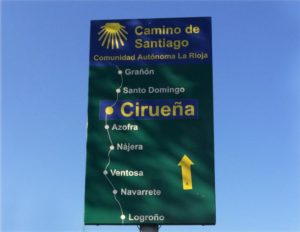 While walking through little towns and villages, I came to the realization that the local people have always (literally for centuries!) been used to seeing pilgrims pass by their homes and small businesses. The pilgrims have become a very familiar part of their environment. This has taught them to be hospitable, and I was privileged to experience this hospitality first-hand. I grew accustomed to being greeted with a friendly “Buen Camino!” When I looked lost and disoriented, I was offered directions before even asking. Once when I stopped in a small town for the night, I was invited to a fiesta where I was offered delicious paella from a huge pan, wine and good company. The fiesta took place in the town square. I loved watching the locals, who came to the fiesta as entire families. Grandfathers, grandmothers, parents, teenagers, toddlers and babies played, talked, and ate together. This is what we all long for: a deep sense of community…
While walking through little towns and villages, I came to the realization that the local people have always (literally for centuries!) been used to seeing pilgrims pass by their homes and small businesses. The pilgrims have become a very familiar part of their environment. This has taught them to be hospitable, and I was privileged to experience this hospitality first-hand. I grew accustomed to being greeted with a friendly “Buen Camino!” When I looked lost and disoriented, I was offered directions before even asking. Once when I stopped in a small town for the night, I was invited to a fiesta where I was offered delicious paella from a huge pan, wine and good company. The fiesta took place in the town square. I loved watching the locals, who came to the fiesta as entire families. Grandfathers, grandmothers, parents, teenagers, toddlers and babies played, talked, and ate together. This is what we all long for: a deep sense of community…
I also had some deeper encounters with locals. My lack of Spanish was not a hindrance, as these were unspoken connections, mostly through loving embraces – a merging of souls in a profound and inexplicable way.
My fellow pilgrims represented many nationalities: Brazilian, French, Spanish, Irish, Polish, Hungarian, German, Dutch, Korean, American, and Canadian. Before going on this trip I assumed that the majority of pilgrims on Camino would be Catholic. To my surprise, I met people of many faiths and from all walks of life: Catholic and Protestant, Buddhist and agnostic, young and old, educated and uneducated. I would never have had a chance to get to know many of them in my “normal” life. For example, I met a sniper soldier who had served in Afghanistan, a group of young men from Germany, a philosophy student, a rap musician, and a mysterious young man who never revealed his background. Frustrated by the physical challenges, sometimes lost and often hungry for a loving, like-minded community, we all became friends on Camino, walking together on a search for the meaning of life. As conversations unfolded, we could see how, despite many differences, we were all connected as human beings. We all hoped that walking the Camino would give us a new perspective on life and bring healing to our hearts and minds. We looked forward to experiencing a sense of community with our fellow pilgrims. We yearned to meet God along the way, and to have our lives changed by this encounter.
The most important thing that I learned on Camino was how to deal with delayed gratification. Before Camino, I expected constant, immediate gratification of my needs and wants, and I got really frustrated if they were occasionally not met. I came to realize that the things I have always in the past perceived as “needs” were actually just “wants”. I wanted to wear fresh clothes every day; in the evening I wanted to have a comfortable, quiet space all to myself free from interruption; when I was hungry, I wanted to eat right away; when I was tired, I felt like taking a break immediately; and when I was soaked with rain, I wanted to dry off. However, it didn’t always happen this way en route, and I discovered that I didn’t need to have all these “wants” met immediately, or even at all. I learned that in order to survive, all that was actually necessary was shelter, simple food, and periodic rest times in the shade.
In addition, planning the next day or even the next hour was senseless on Camino. I had to just let go and accept the unexpected. I didn’t know how the weather would change, what kind of people I would meet on the way, how challenging it would be to walk, and when or if there would be a comfortable place to rest. I started to learn how to live in the moment and accept whatever was happening. It was very freeing.
Paying more attention to the present moment led to more joy and less worry. I became a happy pilgrim – and I know that I’ll be back one day.
Thank you to Marianna, my friend and Camino expert and guide, for introducing me to the Camino adventure.
All photos courtesy of Katarzyna Czyz


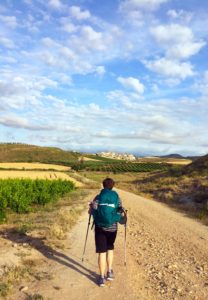
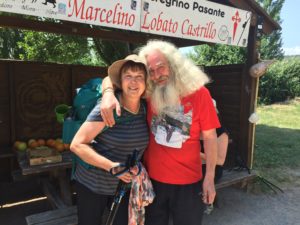
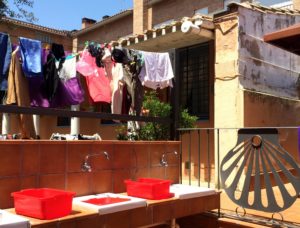
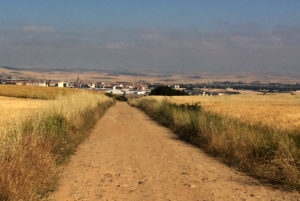






Great article, Kasia. Let me know when you want to go back there.